

|
 Start of the Volvo Ocean Race. Photo by Thierry Martinez / ASSA ABLOY
Start of the Volvo Ocean Race. Photo by Thierry Martinez / ASSA ABLOY
On September 23rd the Volvo Ocean Race, formerly known as the Whitbread Round the World Race, got underway from Southampton, England. The competitors, sailing high-tech grand prix Volvo Ocean 60 yachts (V60), will be stopping in nine countries before reaching Kiel, Germany, where this 32,250 nautical mile-race will end.
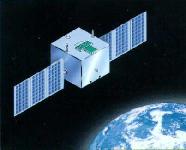 According to the Chinese Xinhua News Agency, China is expected to launch 35 or more science and application satellites over the next five years. The planned satellites will be used in direct-broadcasting, large capacity communications, meteorological and oceanographic observations, navigation and positioning, and disaster mitigation. One of these is China's first ocean satellite, HY-1 (HaiYang 1), developed by the Chinese Academy of Space Technology (CAST). The satellite will carry the Chinese Ocean Colour and Temperature Scanner (COCTS) as well as a 4-band Coastal Zone Imager (CZI). The launch of HY-1, originally scheduled for September 2001, has once again been delayed and is now rescheduled for June 2002.
According to the Chinese Xinhua News Agency, China is expected to launch 35 or more science and application satellites over the next five years. The planned satellites will be used in direct-broadcasting, large capacity communications, meteorological and oceanographic observations, navigation and positioning, and disaster mitigation. One of these is China's first ocean satellite, HY-1 (HaiYang 1), developed by the Chinese Academy of Space Technology (CAST). The satellite will carry the Chinese Ocean Colour and Temperature Scanner (COCTS) as well as a 4-band Coastal Zone Imager (CZI). The launch of HY-1, originally scheduled for September 2001, has once again been delayed and is now rescheduled for June 2002.
 Goddard Earth Sciences (GES), Data and Information Service Center (DISC), and Distributed Active Archive Center (DAAC) is in the process of developing tools to allow users of MODIS data to order smaller, more manageable files. A prototype web-based channel sub-setter is now available for MODIS level 1B products.
Goddard Earth Sciences (GES), Data and Information Service Center (DISC), and Distributed Active Archive Center (DAAC) is in the process of developing tools to allow users of MODIS data to order smaller, more manageable files. A prototype web-based channel sub-setter is now available for MODIS level 1B products.
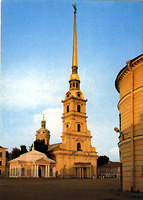 The recently concluded (September 25-28, 2001) international conference on 'Current Problems in Optics of Natural Waters' in St Petersburg, Russia, successfully continued the tradition of the Plenums on Ocean Optics, the main hydrooptical conference of the former Soviet Union. Eight students were sponsored by the IOCCG to attend the conference. Student presentations covered a range of topics including algorithm assessment, retrieval of phytoplankton absorption spectra from reflectance measurements, and inherent optical properties. The following students were sponsored by the IOCCG:
The recently concluded (September 25-28, 2001) international conference on 'Current Problems in Optics of Natural Waters' in St Petersburg, Russia, successfully continued the tradition of the Plenums on Ocean Optics, the main hydrooptical conference of the former Soviet Union. Eight students were sponsored by the IOCCG to attend the conference. Student presentations covered a range of topics including algorithm assessment, retrieval of phytoplankton absorption spectra from reflectance measurements, and inherent optical properties. The following students were sponsored by the IOCCG:
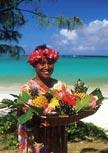 Dr. Mervyn Lynch of the IOCCG recently organised a short workshop on "Remote Sensing Resources for Marine Management" at the Institut de Recherche pour le Developpement (IRD) in Noumea, New Caledonia (September 25-27, 2001), in conjunction with the IOC Perth Regional Office. The IOC sponsored 11 delegates from various South Pacific nations to attend the workshop (as well as four lecturers), while a further 12 non-sponsored delegates also registered, bringing the total number of participants to 23. The session leaders/workshop lecturers were Mervyn Lynch (Curtin Univ., Perth), Trevor Ward (CSIRO, Perth), Peter Fearns (Curtin Univ., Perth), CÚcile Dupouy (IRD, Noumea), Lesley Clementson (CSIRO, Hobart) and Robert Frouin (Scripps, California). IRD Noumea provided the venue and local organisational support, and the IOCCG sponsored Dr. Frouin. A full report of the workshop will be available shortly. The IOCCG plans to hold a follow on, more intensive training course next year (September, 2002).
Dr. Mervyn Lynch of the IOCCG recently organised a short workshop on "Remote Sensing Resources for Marine Management" at the Institut de Recherche pour le Developpement (IRD) in Noumea, New Caledonia (September 25-27, 2001), in conjunction with the IOC Perth Regional Office. The IOC sponsored 11 delegates from various South Pacific nations to attend the workshop (as well as four lecturers), while a further 12 non-sponsored delegates also registered, bringing the total number of participants to 23. The session leaders/workshop lecturers were Mervyn Lynch (Curtin Univ., Perth), Trevor Ward (CSIRO, Perth), Peter Fearns (Curtin Univ., Perth), CÚcile Dupouy (IRD, Noumea), Lesley Clementson (CSIRO, Hobart) and Robert Frouin (Scripps, California). IRD Noumea provided the venue and local organisational support, and the IOCCG sponsored Dr. Frouin. A full report of the workshop will be available shortly. The IOCCG plans to hold a follow on, more intensive training course next year (September, 2002).
|
 Prof. Marlon Lewis will convene a special session on 'Applications of Ocean Color Remote Sensing' at next year's Pan Ocean Remote Sensing Conference (PORSEC) in Bali, Indonesia (September 3-6, 2002). This session will highlight recent advances in understanding the biology, physics and chemistry of the sea with the help of various ocean colour satellites. Papers are solicited on any aspect of ocean colour remote sensing, but priority for the oral session will be given to those papers which use ocean colour data sets to address significant oceanographic questions and applications. For additional information write to Prof. Marlon Lewis or visit the PORSEC website.
Prof. Marlon Lewis will convene a special session on 'Applications of Ocean Color Remote Sensing' at next year's Pan Ocean Remote Sensing Conference (PORSEC) in Bali, Indonesia (September 3-6, 2002). This session will highlight recent advances in understanding the biology, physics and chemistry of the sea with the help of various ocean colour satellites. Papers are solicited on any aspect of ocean colour remote sensing, but priority for the oral session will be given to those papers which use ocean colour data sets to address significant oceanographic questions and applications. For additional information write to Prof. Marlon Lewis or visit the PORSEC website.
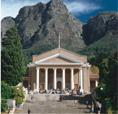 The IOCCG-sponsored training course on 'Remote Sensing of Ocean Colour: Analysis and Applications' will take place at the University of Cape Town, South Africa from 3-13 December 2001. Seventeen candidates from 10 countries in Africa have been selected to attend the course and will be notified shortly. The course will include a review of the Benguela Upwelling system as well as an introduction to in-water optics, primary production and SeaDAS, amongst other topics.
The IOCCG-sponsored training course on 'Remote Sensing of Ocean Colour: Analysis and Applications' will take place at the University of Cape Town, South Africa from 3-13 December 2001. Seventeen candidates from 10 countries in Africa have been selected to attend the course and will be notified shortly. The course will include a review of the Benguela Upwelling system as well as an introduction to in-water optics, primary production and SeaDAS, amongst other topics.
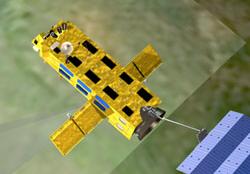 The launch of European Space Agency's new earth observing satellite, ENVISAT, carrying the MERIS ocean colour sensor, has once again been rescheduled, this time to mid-January 2002. The delay is due to problems with the upper stage of the Ariane 5 launcher.
The launch of European Space Agency's new earth observing satellite, ENVISAT, carrying the MERIS ocean colour sensor, has once again been rescheduled, this time to mid-January 2002. The delay is due to problems with the upper stage of the Ariane 5 launcher.
SeaWiFS' fourth anniversary 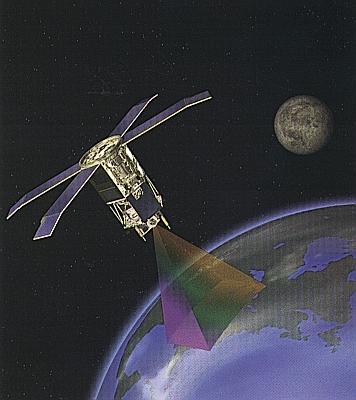 The mission completed four years of operation on September 18, 2001. Since September 1997, a multi-year record of the changing biology of the Earth in its entirety has been documented. As a part of this fourth anniversary, the SeaWiFS project office is planning a special issue of Deep Sea Research (DSR) Part II. Contributions to the special issue should focus on how the SeaWiFS data can be used to understand ocean, biological, biogeochemical, physical and/or geological processes. Letters of intent to submit an article should be sent to dsr2@seawifs.gsfc.nasa.gov by February 2002. For further questions, write to Dave Siegel.
The mission completed four years of operation on September 18, 2001. Since September 1997, a multi-year record of the changing biology of the Earth in its entirety has been documented. As a part of this fourth anniversary, the SeaWiFS project office is planning a special issue of Deep Sea Research (DSR) Part II. Contributions to the special issue should focus on how the SeaWiFS data can be used to understand ocean, biological, biogeochemical, physical and/or geological processes. Letters of intent to submit an article should be sent to dsr2@seawifs.gsfc.nasa.gov by February 2002. For further questions, write to Dave Siegel.
SeaWiFS data
SeaDAS Training
New images from SeaWiFS, MODIS and OCM have been added to the IOCCG ocean-colour image gallery. Images can be viewed by continent or by sensor. Any images you would like to see in this section can be submitted to us electronically by e-mail.
|
|
Material for possible inclusion in the IOCCG Newsletter should be submitted to the Project Scientist. If you would like to be placed on the IOCCG News mailing list, and receive a brief summary of the latest news by e-mail (approximately once every 2 months), please send an e-mail with 'subscribe' in the subject line to subscribe@ioccg.org.To unsubscribe from the IOCCG News mailing list please send a message with 'unsubscribe' in the subject line to unsubscribe@ioccg.org.
|
|
|
|